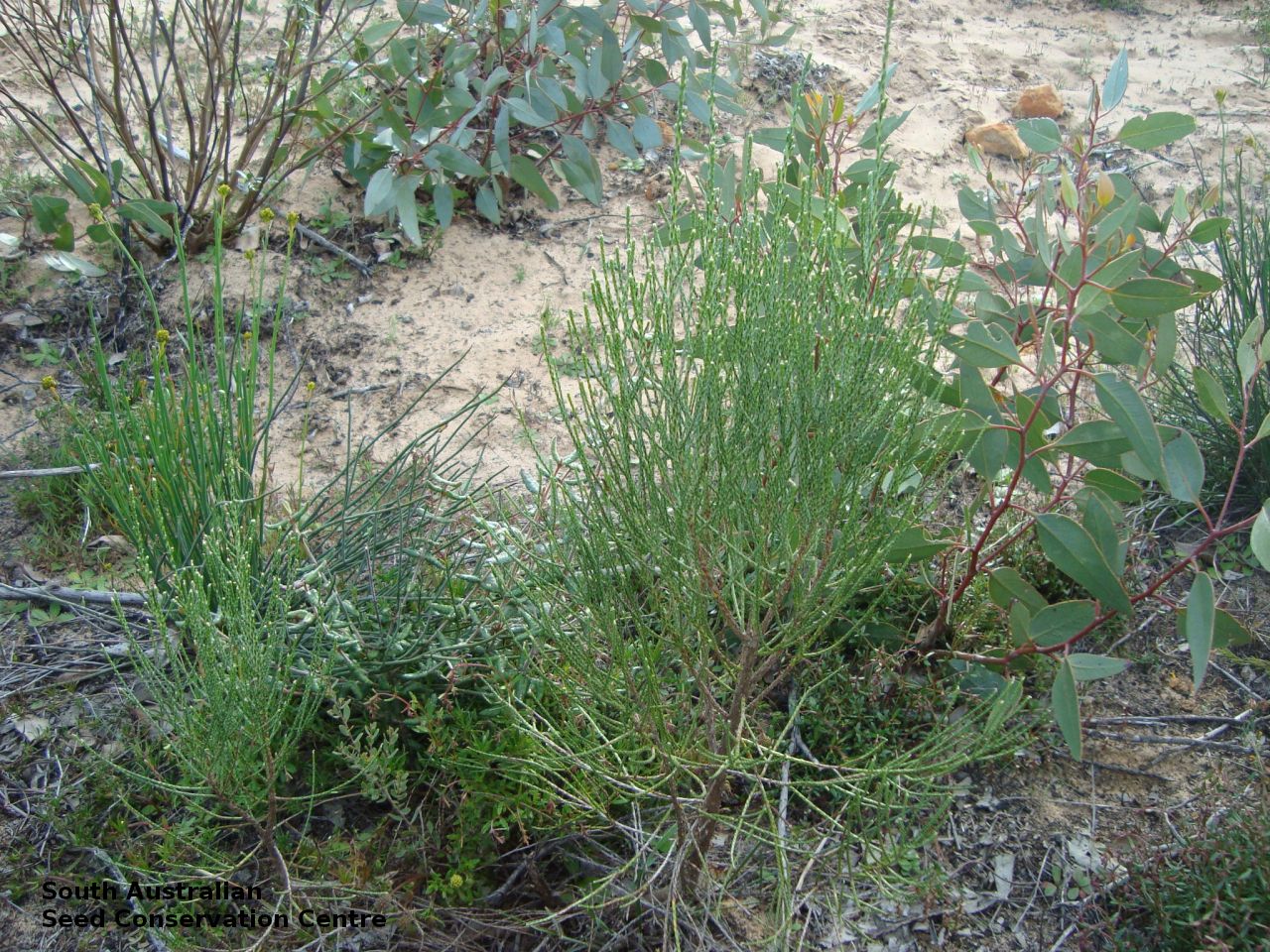
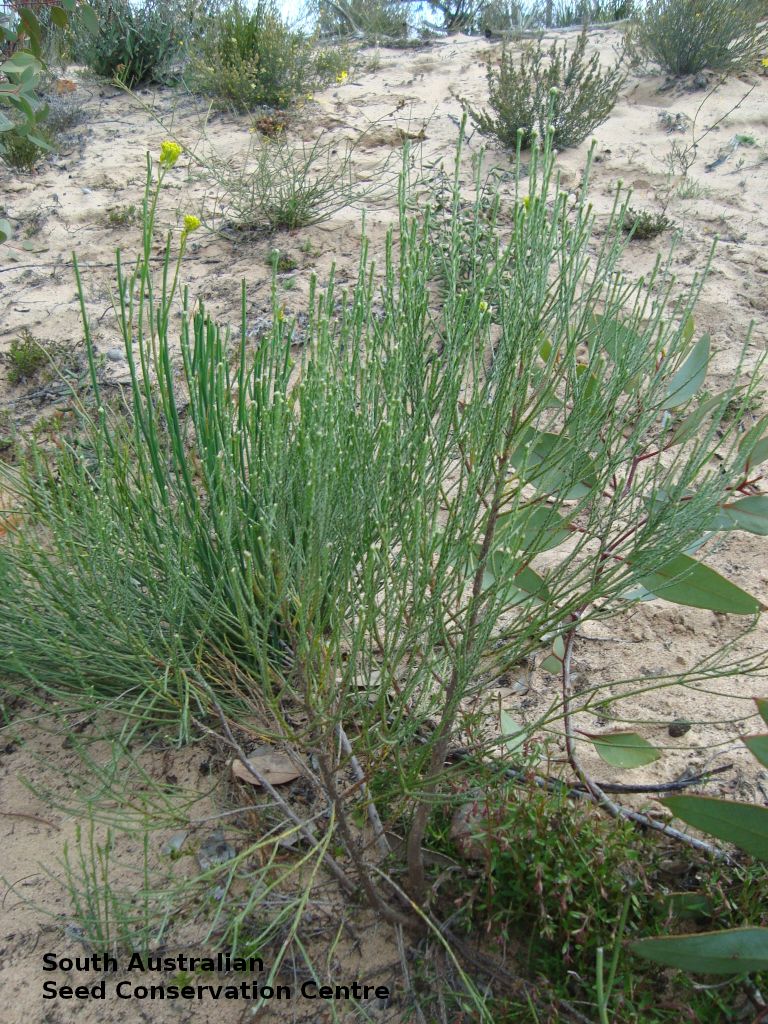
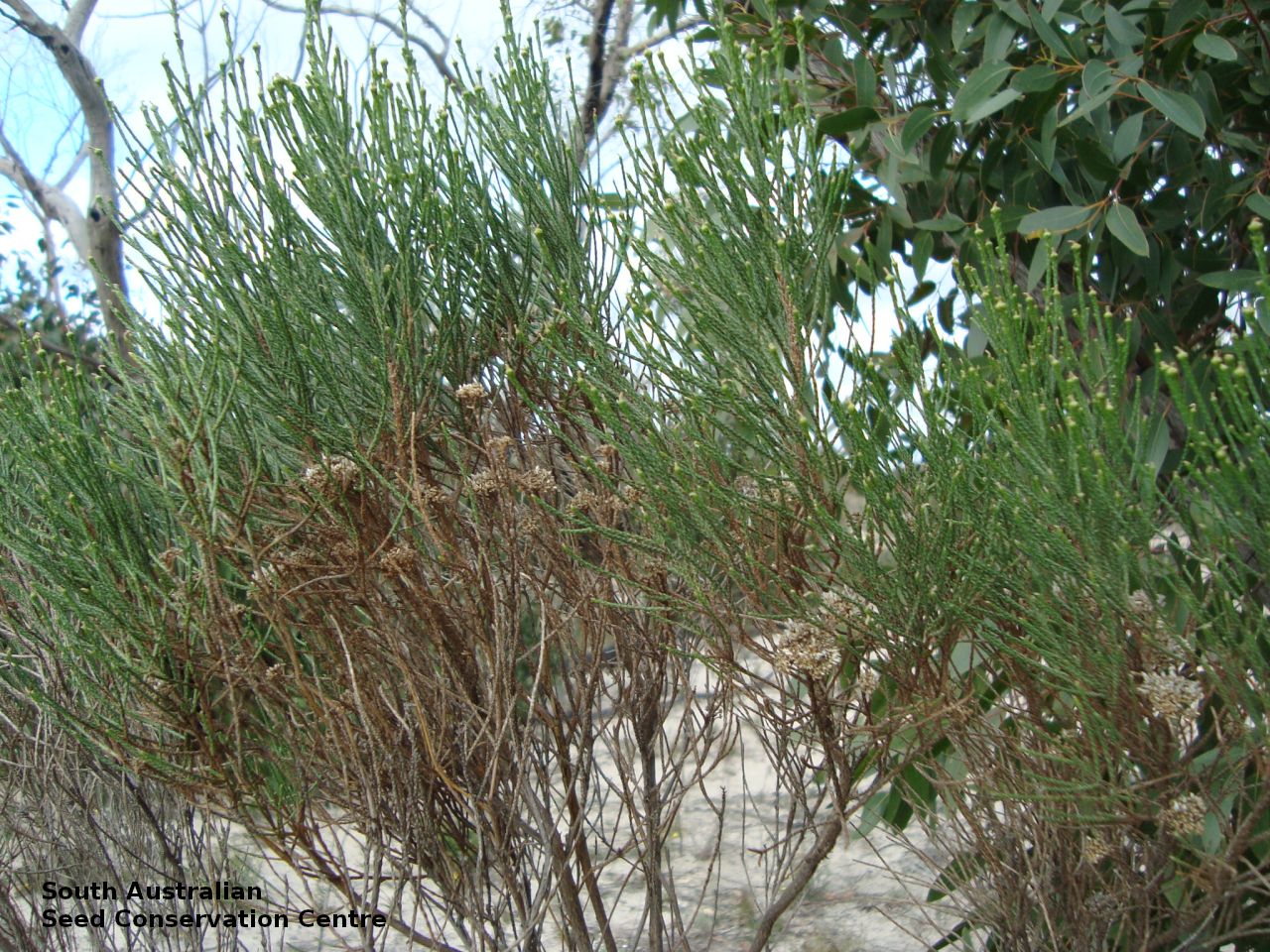
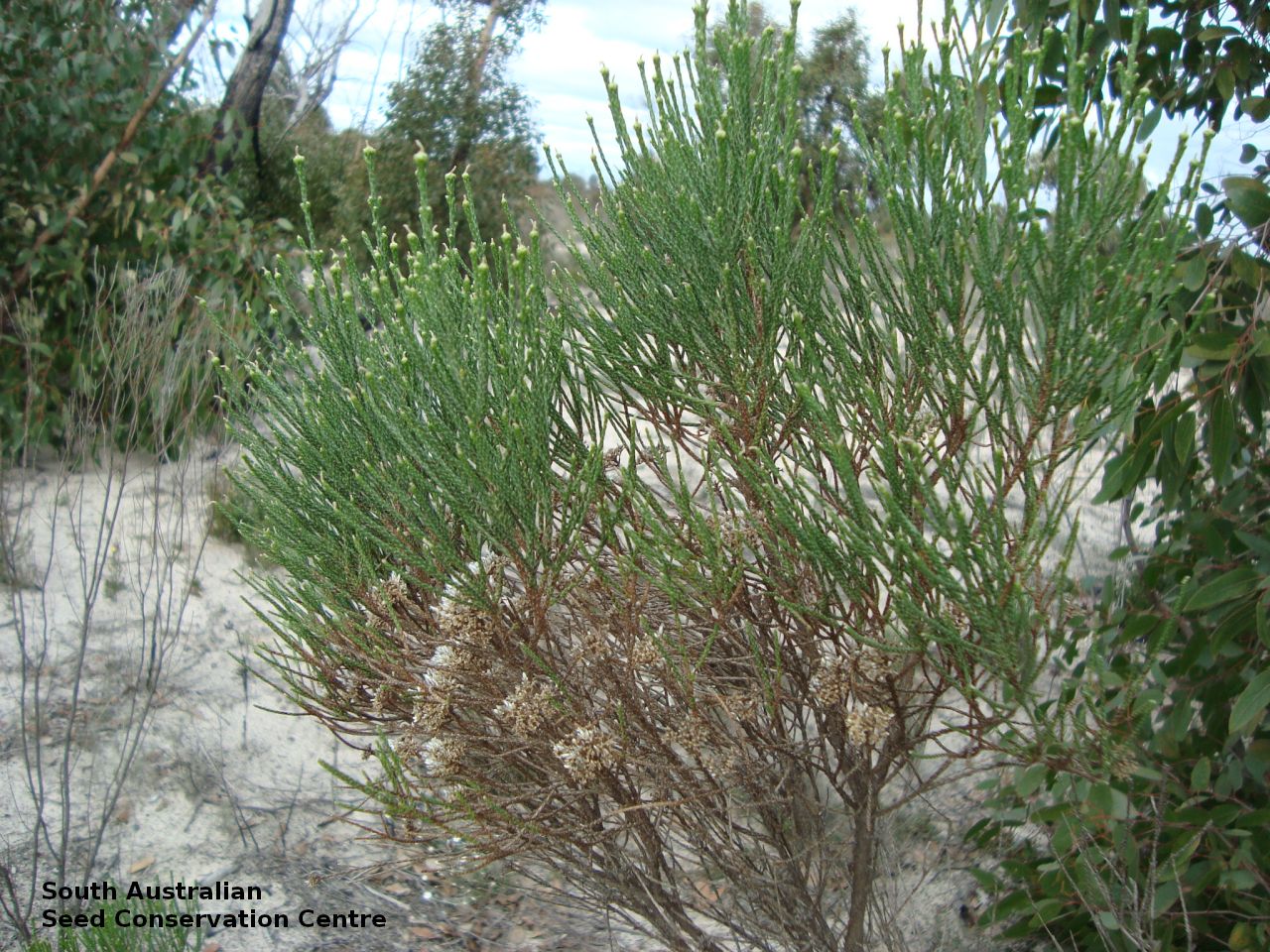
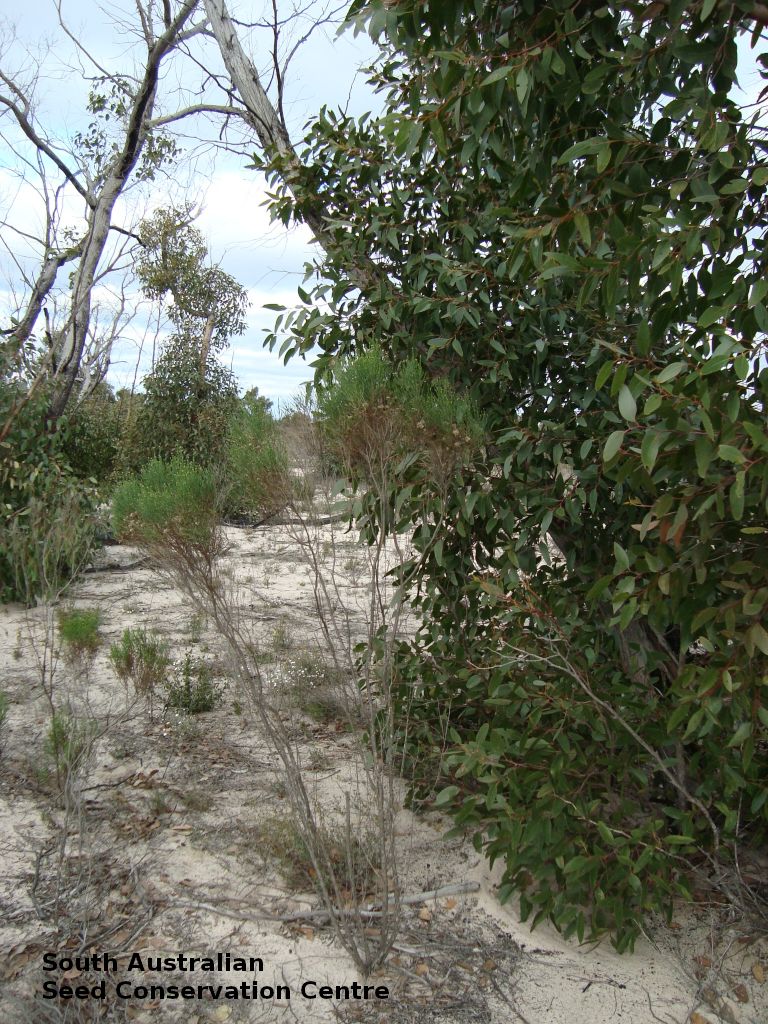
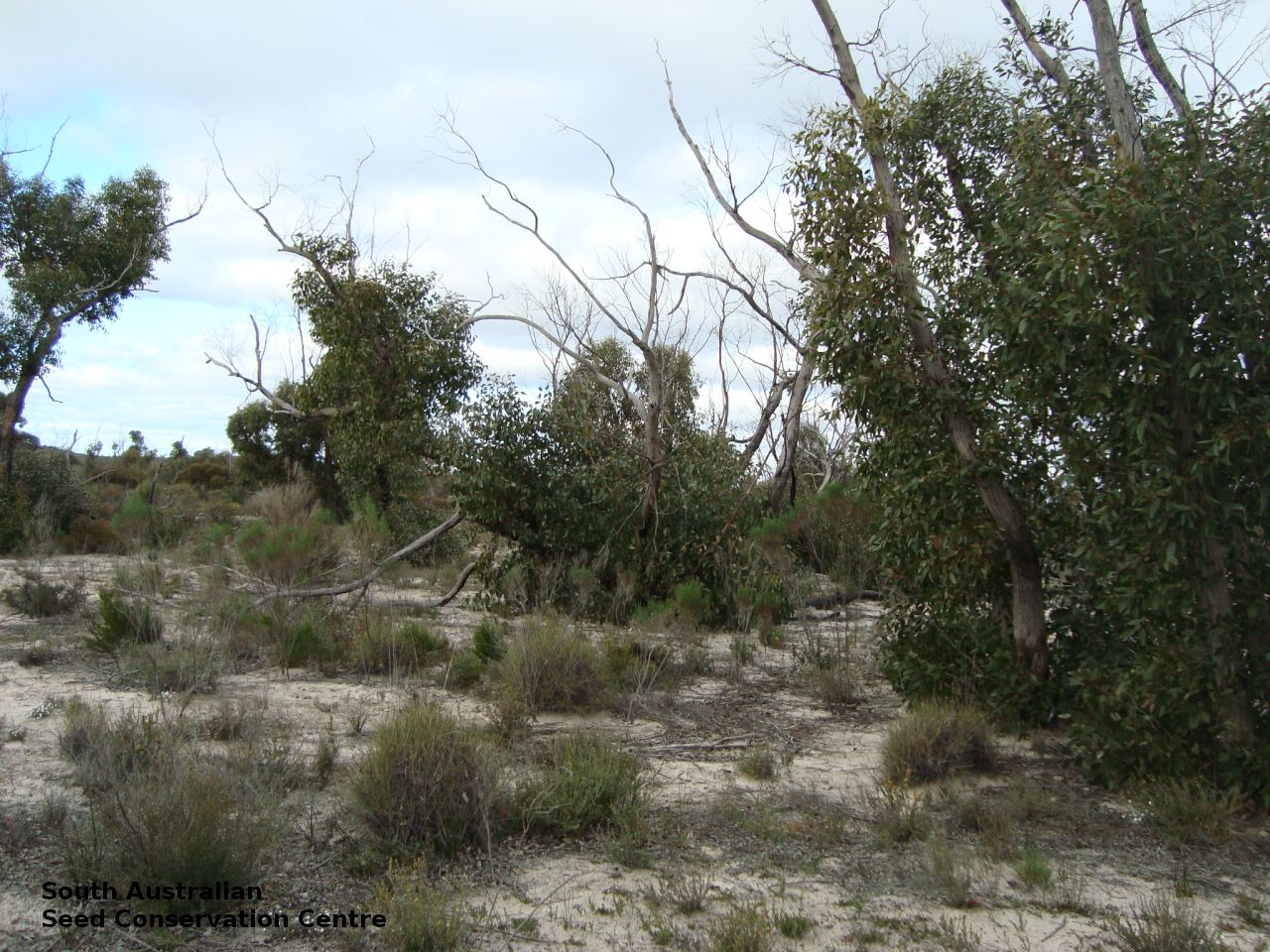
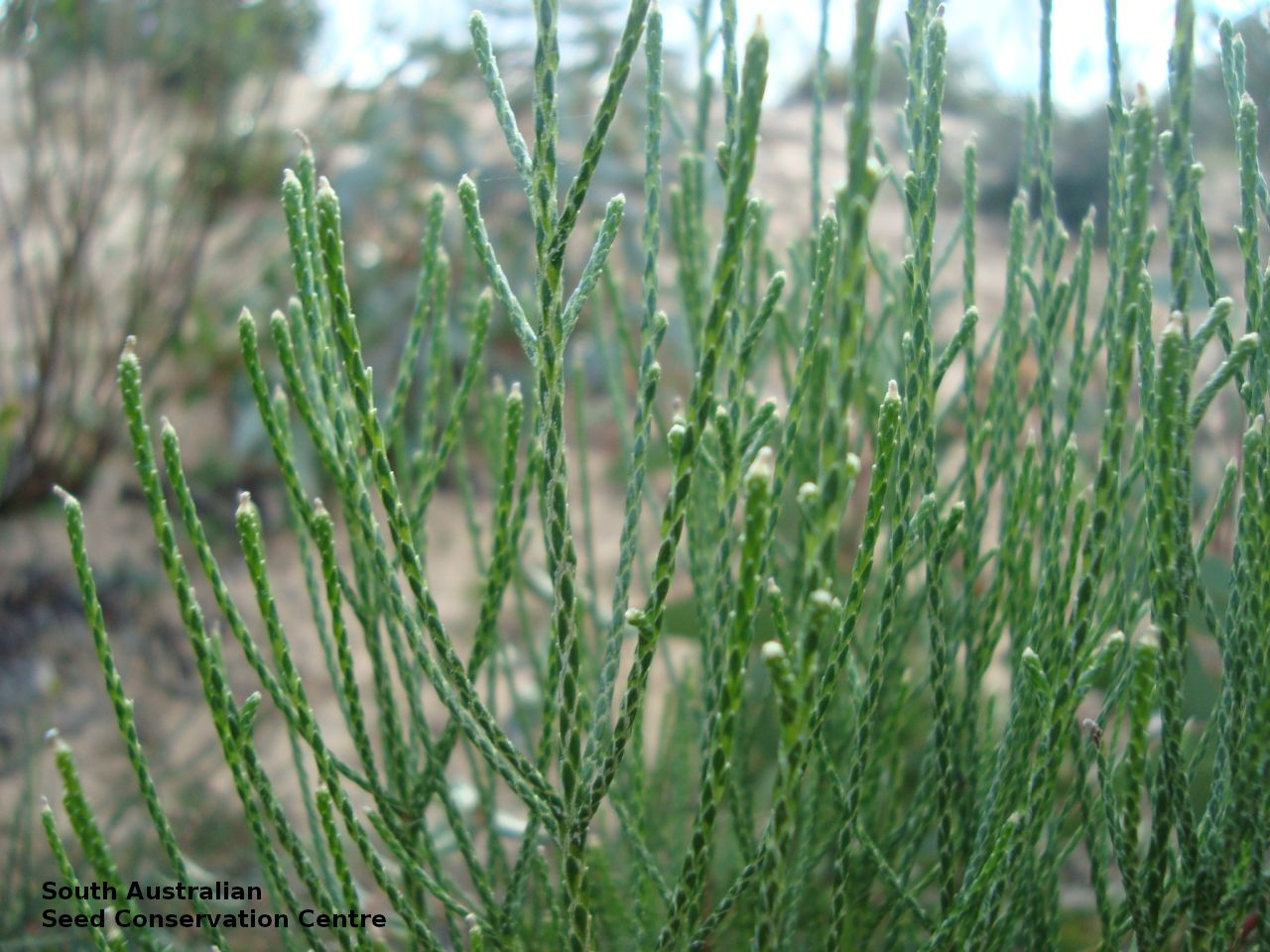
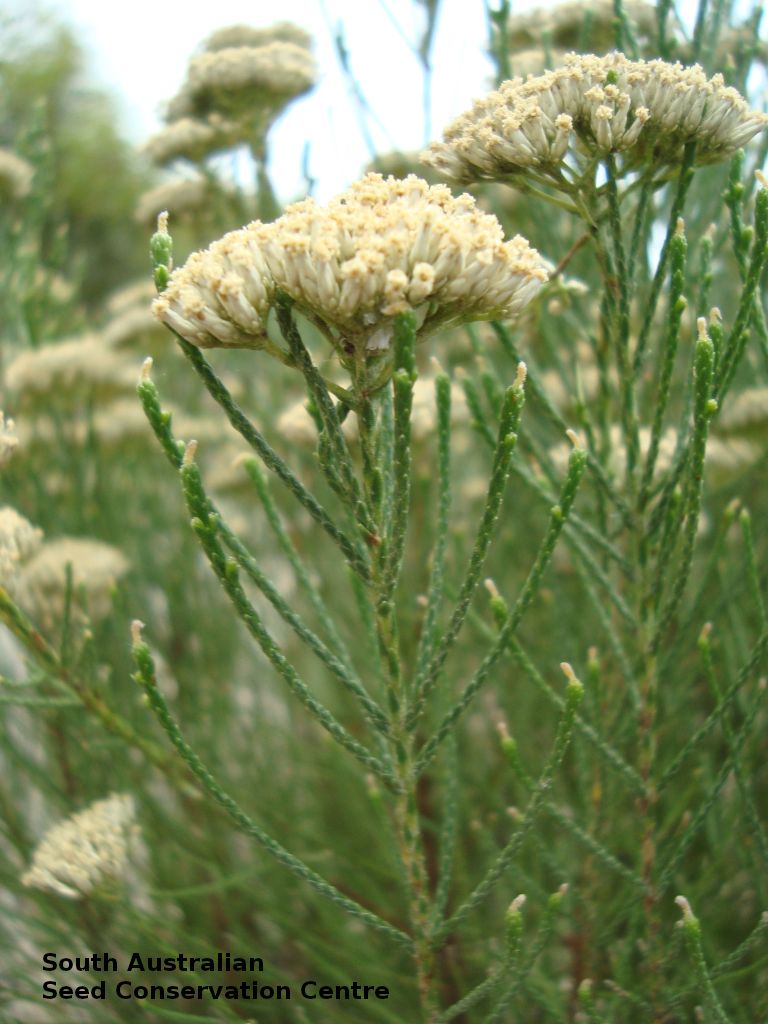
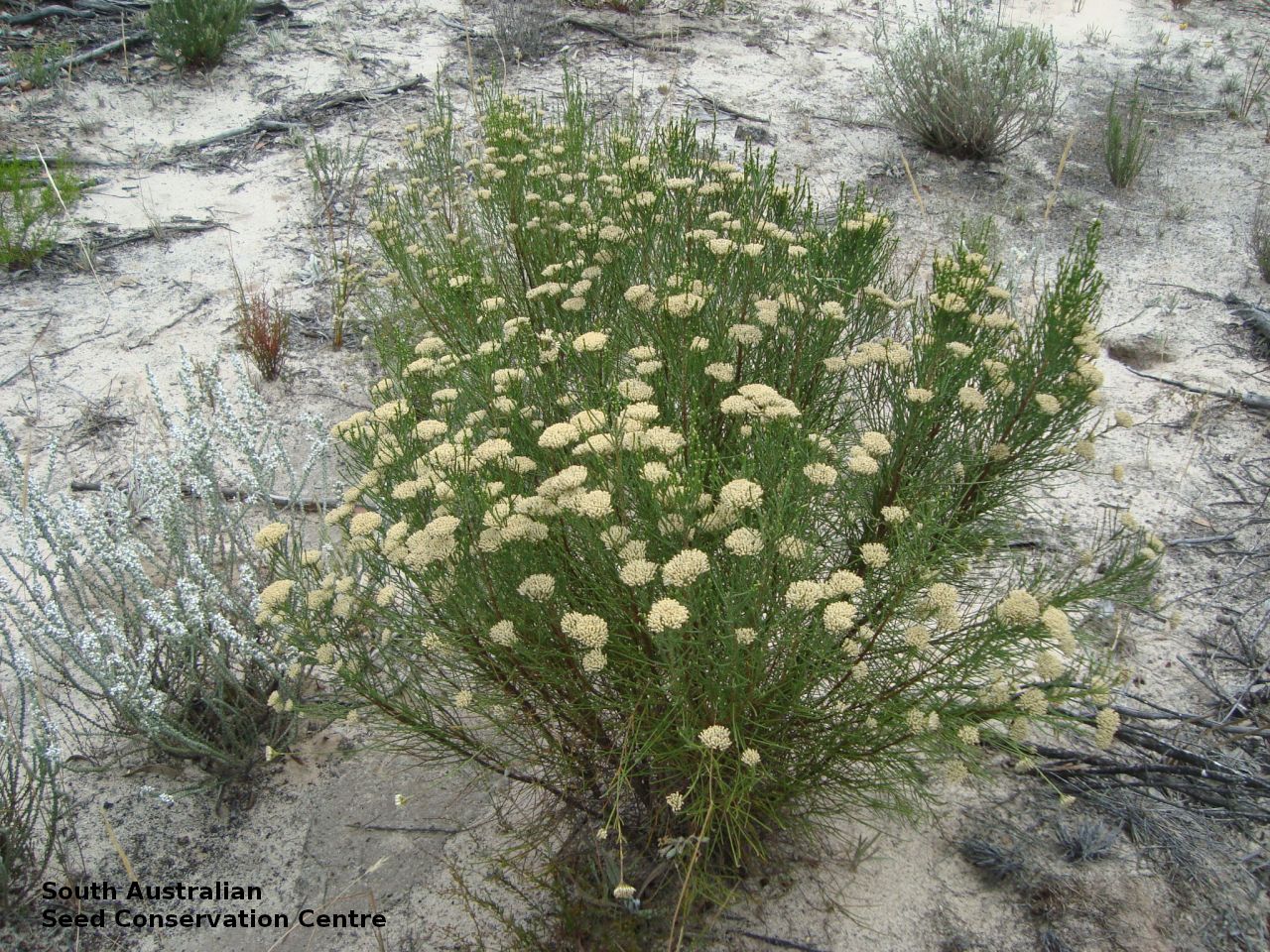
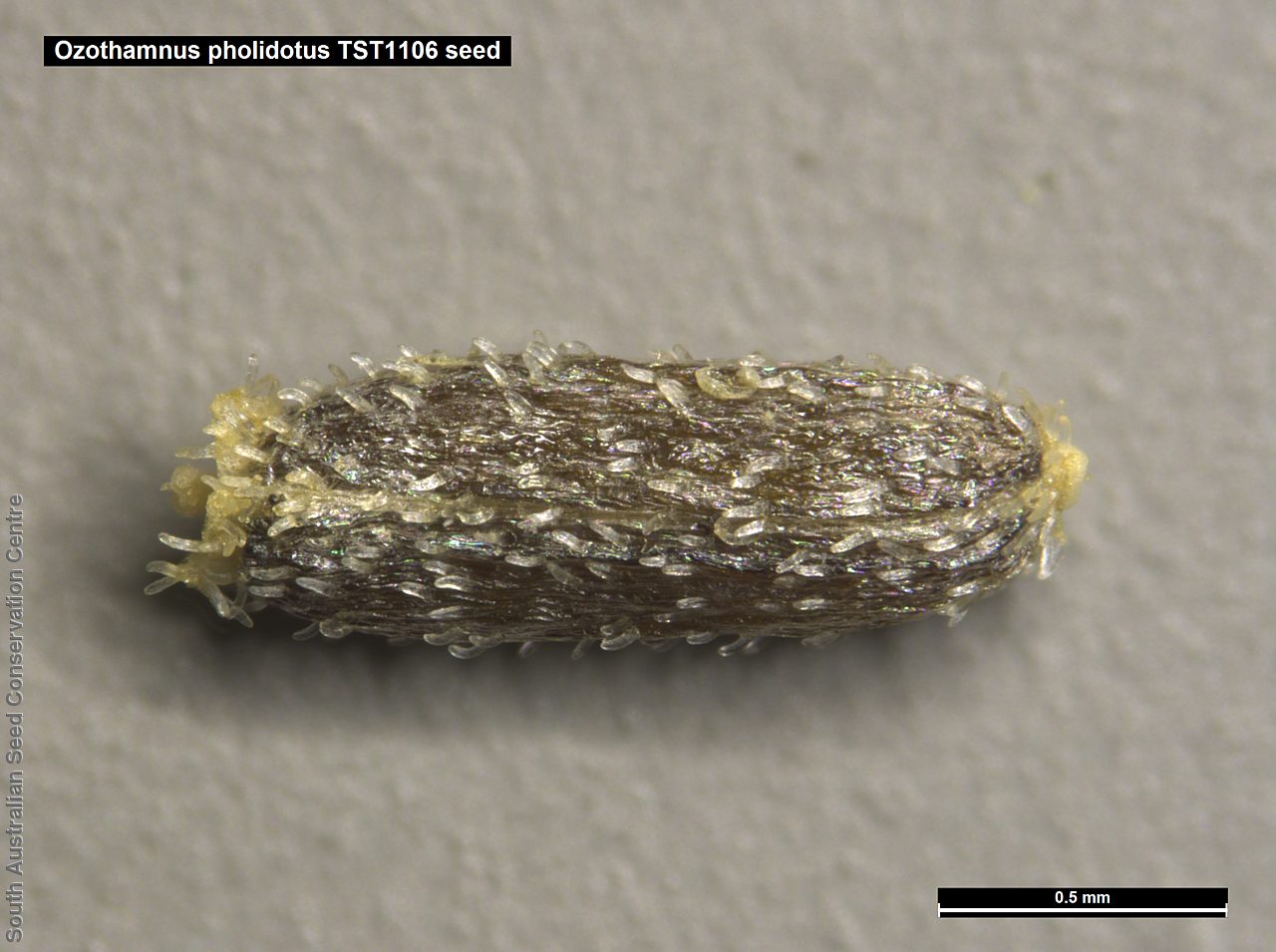
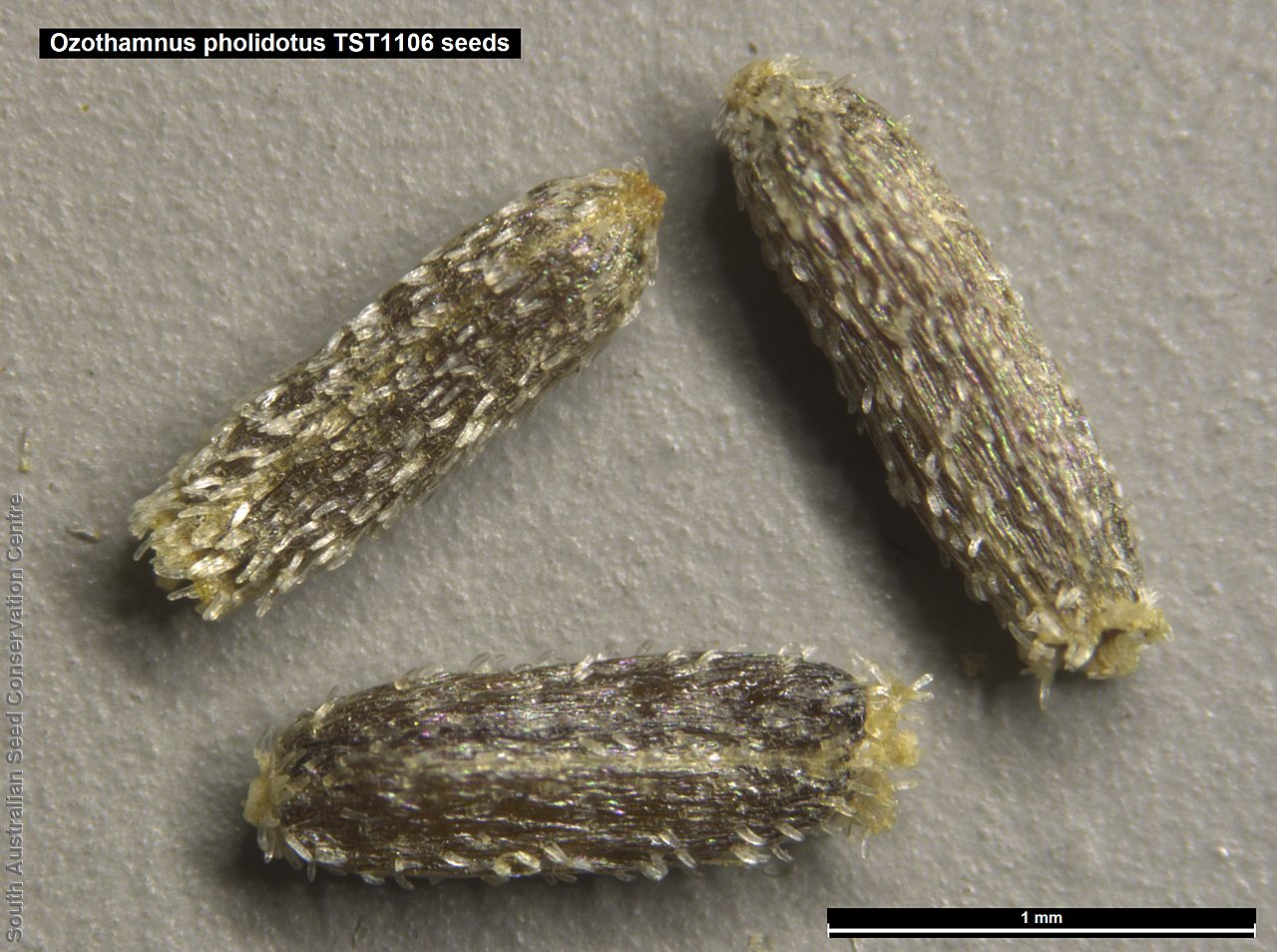
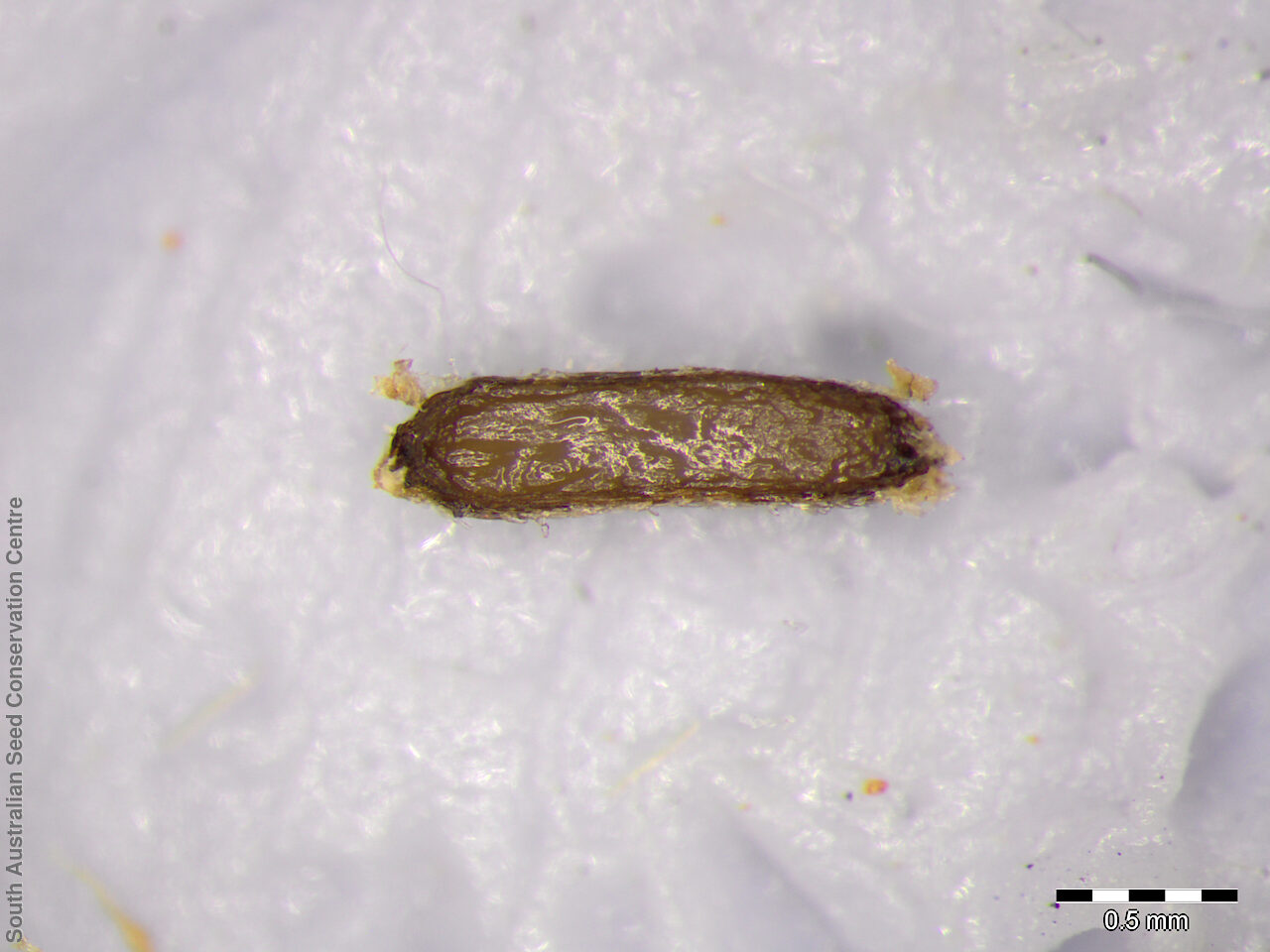
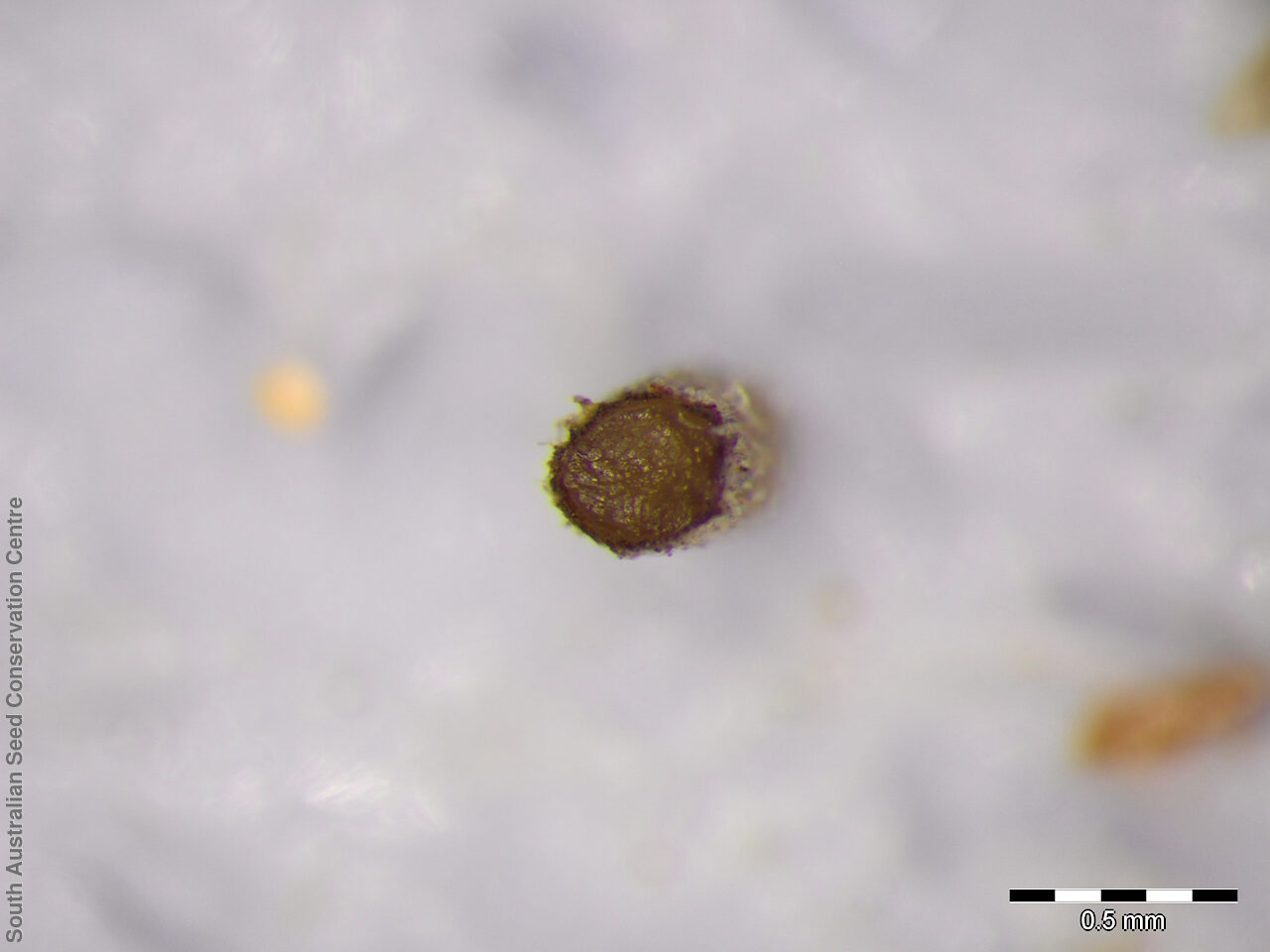


Botanical art
Prior names
Helichrysum pholidotum
Humea squamata
Humea pholidota
Haeckeria pholidota
Common names
Scaly Bush-everlasting
Scaly Haeckeria
Etymology
Ozothamnus, from the Greek 'ozo', meaning to smell and 'thamnos', meaning shrub, alluding to the fragrant foliage when crushed. Pholidotus, from the Greek 'pholidoros' meaning scaly, referring to the branchlets covered with scale-like leaves.
Distribution and status
Found in the upper South-east and lower Murray region in South Australia, growing in mallee and heath on richer soils, often in association with Eucalyptus leucoxylon. Also found in Victoria. Native. Rare in South Australia. Uncommon in Victoria. More locally common after a bushfire.
Herbarium regions: Murray, South Eastern
NRM regions: South Australian Murray-Darling Basin, South East
AVH map: SA distribution map (external link)
Plant description
Glabrous, erect shrub to 1.5 m high. Dense flexible branchlets covered with imbricate, scale-like leaves. Leaves lanceolate; subacute to 4 mm long; bright green. Inflorescence a dense hemispherical corymb to 40 mm wide, with 4-6 florets that are white to dull cream; corolla yellow. Flowering between September and December. Fruits are dense cream-brown heads. Seeds are brown, narrowly cylindrical seed to 1.5 mm long and 0.5 mm wide, covered sparsely with short white hairs. Seed embryo type is spatulate, fully-developed.
Seed collection and propagation
Collect seeds between January and March. Collect mature seed heads turning a cream-brown. Place the heads in a tray and leave to dry for 1-2 weeks, then rub the heads gently with your hands to dislodge the seeds. Use a sieve to separate the unwanted material. Store the seeds with a desiccant such as dried silica beads or dry rice, in an air tight container in a cool and dry place. From one collection, the seed viability was high, at 95%.
| Location | No. of seeds (weight grams) | Number of plants | Date collected | Collection number Collection location | Date stored | % Viability | Storage temperature |
|---|---|---|---|---|---|---|---|
| BGA | 6,000 (0.86 g) | 40+ | 7-Jan-2011 | TST1106 South Eastern | 1-Jan-2012 | 95% | +5°C, -18°C |
Number of plants: This is the number of plants from which the seeds were collected.
Collection location: The Herbarium of South Australia's region name.
% Viability: Percentage of filled healthy seeds determined by a cut test or x-ray.